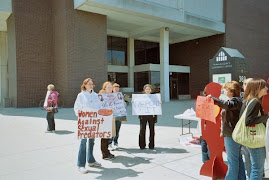
More than 624,000 computers in the USA have traded child pornography, much of it showing the sexual abuse of very young children, in the past 2½ years, a leading police authority planned to tell Congress at a hearing Wednesday.
Yet federal authorities with limited resources pursue fewer than 1% of the leads, according to a USA TODAY analysis of government data.
Flint Waters, chief of the Wyoming Internet Crimes Against Children task force, has been tracking child porn to specific computers, by serial number, since October 2005. He says that last year, he identified nearly half the computers, 267,120, on just one online network.
U.S. attorneys prosecuted 1,705 cases last year and won 1,409 convictions, according to court records obtained by Transactional Records Access Clearinghouse at Syracuse University. The Justice Department says the numbers are higher — 2,118 prosecutions and 1,715 convictions — but it includes other online crimes against children. The cases result from all kinds of tips, not just those from Waters.
As child pornography becomes increasingly pervasive, spreading from the Internet to cellphones and iPods, police have new tools, such as the software Waters developed, to identify traffickers. A Senate Judiciary Committee hearing today will probe whether law enforcement, given those tools, is doing enough.
FIND MORE STORIES IN: Congress Justice Department House of Representatives iPods Customs Enforcement D-Del Syracuse University Alberto Gonzales Sen. Joseph Biden Waters Transactional Records Access Clearinghouse Child Exploitation Obscenity Section
TECHNOLOGY: Software tracks child porn traffickers online
The Justice Department, particularly under former attorney general Alberto Gonzales, has called enforcement a top priority. Prosecutions more than doubled in the past five years, the department says, and the number of federal-state Internet Crimes Against Children task forces increased from 46 to 59 last year. In 2006, the department launched a program, Project Safe Childhood, to coordinate federal efforts.
"We're trying to use every available resource," says Drew Oosterbaan, chief of the department's Child Exploitation and Obscenity Section. He says there is "unparalleled" federal-state cooperation. "We're supremely more effective than we were."
A boom in funding, though, hasn't followed. "Everyone says great things, but … it hasn't happened," says Arnold Bell, chief of the FBI's Innocent Images Unit, a program to fight child pornography. He says his program's funds have barely budged. It got $33.1 million in 2006, $34.8 million in 2007.
The number of child porn cases hasn't changed much. Innocent Images opened 2,440 cases last year, compared with 2,430 in 2003 and 2,370 in '02.
"This problem is growing by leaps and bounds," says Sen. Joseph Biden, D-Del. He says the Justice Department hasn't committed enough resources to fight it and that department leadership on the issue is "non-existent." He is sponsoring a bill, passed by the House of Representatives in November, to spend $1.05 billion over eight years on fighting child porn. That would more than triple funding for the task forces, he says.
"You could easily apply another 1,000 agents" to fight online child exploitation, says Shawn Bray of the Cyber Crimes Center at U.S. Immigration and Customs Enforcement, which investigates child sex tourism, trafficking and porn.
"We're not even scratching the surface," says Waters, who has helped train 1,800 investigators to use his software. "We have to tell folks we're hurting."
Visit this website to view the video of Flint Waters describe the emotional impact of his job.



No comments:
Post a Comment